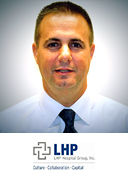INSIGHTS
Innovative IT Can Help Cure the Ailing US Healthcare System
When looking at how cloud-based technologies can make businesses more agile and responsive, there may be no better example than the American healthcare system.
The US spends more on healthcare per capita than any other nation, but ranks 34th for life expectancy – tied with Cuba, Costa Rica and Columbia. It’s well behind most countries in Asia and Europe, according to the World Health Organization.
We’re very much ahead of the curve. But just because we’re there doesn’t make it any easier.
Americans argue endlessly over exactly what is wrong, but there’s near universal agreement that aging technology contributes to inefficiency and high cost. The Affordable Care Act, better known as Obamacare, went so far as to require standards for Electronic Medical Records (EMR) so that myriad healthcare, government and insurance networks can share appropriate information more efficiently.
Some hospital systems with aging technical infrastructure balk at the burdensome regulations while others turn to technologies that give them an edge on the competition, a key goal in the IT transformation underway around the globe.
Anthony Teri , IT Director for the LHP Hospital Group in New Jersey, said he moved to his job from another highly respected hospital three years ago because he was excited by the potential of its centralized, cloud-based approach to data. “That’s why I came aboard here,” he said.
In many of the interviews for the Transform to Better Perform initiative, experts have stressed that no new technology will be result in true innovation unless the people behind it are committed. In a survey conducted over the summer, we found less than half of the business executives surveyed gave their IT teams high marks for innovation. Fifteen percent rated their IT group’s ability to innovate as “poor.”
“Most IT people in healthcare are working for a company that’s been around for so long that it’s business as usual. They just come in and stare at what’s in front of them every day,” said Teri. “A lot of places have IT managers and directors who are very short-sighted. They’re task-oriented instead of being proactive and project-based.”
Clinical IT organizations have a weighty challenge. They have lived and breathed task based email and file store environments. With their focus firmly on the line of care, they really weren’t prepared for the advent of information technology systems. This has forced a major gap between the need for critically available systems and the current 8 to 5 environment. The costs to create a critical care production network, non-critical supporting network, development and customer shared environments has paralyzed many organizations.
“Supporting 24x7 availability and service has taxed available teams and of course the impact on the budgets has been staggering,” notes Donn Wurts, Senior Director for the Healthcare Practice at Dimension Data. “Solutions that can deliver capability, compliance, on-demand elasticity and availability with minimal impact on the current IT organization can help cover the evolution gap.”
Tech and Business
Teri reflects a new type of IT worker, who is challenged by how IT innovation can improve business operation. “I went and got an MBA because I felt it could augment my career, because I knew I wanted to be a director and then a CIO,” he said. “That’s kind of how I got this job. My company looks to get business-minded people in the director and senior roles.”
Similarly, Teri said his staff includes professional, including former nurses, who understand the business well and want to move into technology to help make a difference.
Many hospitals maintain on-premises datacenters. If they crash, said Teri, “you’re down. You’re out.”
“If you have a datacenter with physical servers all over the place, that’s not efficient. They can break down and then you have to manage that and the remediation and your costs,” he said. “I would say you should virtualize. Put a plan in place to identify what you need first. Do we need more storage first? Do we need to virtualize first? Chances are you’re going to need to virtualize first and then worry about your data storage, but they can go hand in hand.”
LHP, for example, is a relatively small but national player in healthcare. It owns five hospitals along with multiple offsite medical facilities and Teri says it has plans to acquire more of both.
Teri says the company thrives and grows because it uses the same EMR systems throughout in what Teri calls a “centralized matrix” that is administered by security and network teams, with IT directors at each hospital. The systems not only includes most of the medical and business data generated by operations, but also emails, the phone system and other types of data. HIPAA, the federal health privacy act, limits who can see different types of data, and those limitations are controlled within the network.
“We’re very much ahead of the curve. But just because we’re there doesn’t make it any easier,” Teri said. “Sometimes there are problems that happen and, because we’re centralized, maybe it can affect more than one site. But we can mobilize very quickly.”
Technology alone won’t cure what ails the US healthcare system, but as Teri’s situation shows, the right people and the right IT strategy can streamline systems, improve communications, enhance record keeping, assure compliance and position healthcare businesses to operate more profitably.
“It’s going to cost you a few bucks to migrate everything over and to clean up your datacenter,” said Teri. “But once you do, you will have a fully fault-tolerant, redundant, secured, virtualized datacenter. And that’s priceless.”
Contributors

Anthony Teri
Director of Information Technology
LHP Hospital Group / HackensackUMCPV
Read Biography
More Point of Views

Srini Koushik
Chief Technology OfficerMagellan Health
Point of view story
The Traditional Model of IT is Dead - Meet Exponential IT
Zahl Limbuwala
CEO and Co-FounderRomonet


